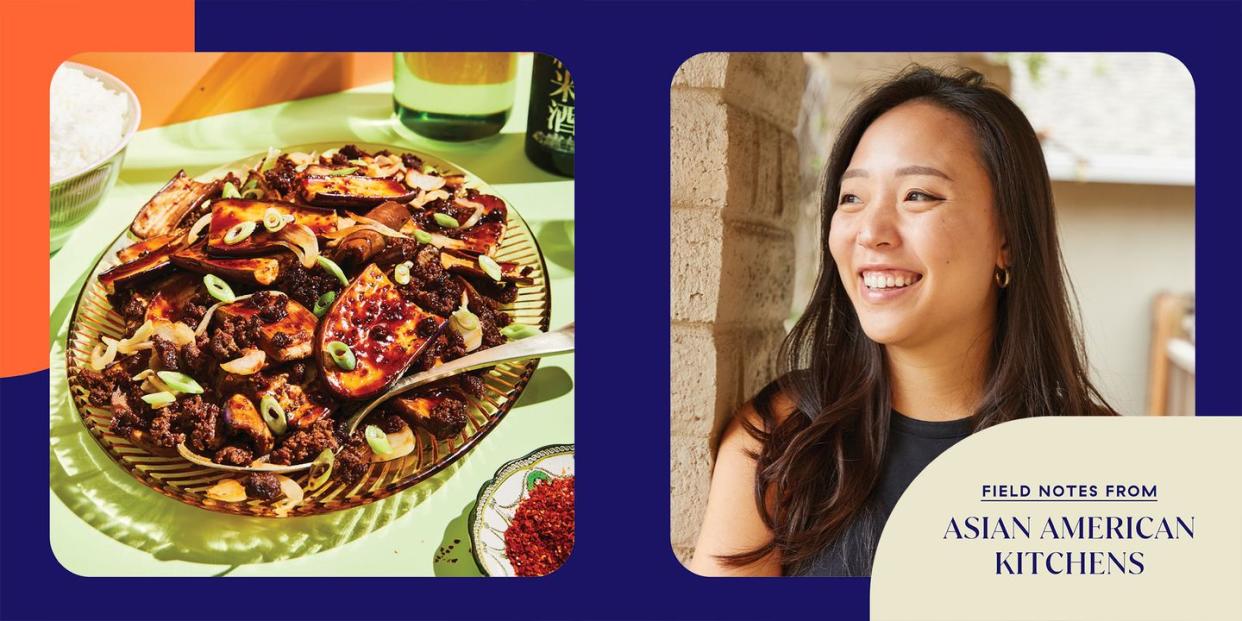The First Time I Brought My Non-Korean Boyfriend Home To Try My Mom's Homestyle Cooking

“You must be so hungry!” my mother exclaimed as she greeted us at the door. After an unexpected electric-car battery death and tow, my boyfriend Theo and I had finally arrived, three hours later than planned, at my family’s home in San Jose.
My mother had spent days prepping for Theo’s weekend visit, marinating gochujang-rubbed ribs, pickling bok choy kimchi, and turning the house upside down to scrub it spotless. She ushered Theo to the backyard, where my father had been grilling the ribs for half the afternoon. As they fussed over what to feed Theo first, I felt my shoulders tense up, dreading the inevitable dinner to come.
Growing up as a 1.5-generation Korean American, I’d always been filled with preemptive anxiety for the day I’d introduce my significant other to my parents. The odds were that whoever I ended up dating might not be Korean—and they’d have to pass the dinner table test. I wasn’t sure how Theo, who is half-Filipino and half-Jewish, would react to the cultural challenges.
First, there were Korean dining customs, which are the opposite of Western individualistic dining. My little brother and I were often scolded if we didn’t adhere to Korean table etiquette, with hierarchies dictating who would take the first bite and where soju glasses would be held in relation to the elders. With our shared, small plates of banchan, chopsticks and spoons dug into the same dishes. At the dinner table, each meal was a miniature battle. We staked our chopsticks into the same piece of meat or vegetable, playing tug of war with the last morsel.
Korean cuisine, marked by spicy spreads of meats and stews, is pungent with onion, garlic, and ginger. My mother had only made Korean food for us growing up, which I’d bemoaned and tried to escape at every chance by eating out with friends. I always brushed and gargled mouthwash before leaving the house, in case I had garlic breath after meals.
But I wasn’t too concerned about Theo being able to handle the spice levels or the drinking formalities. He had lived in Los Angeles' K-town, and I’d already taken him to my favorite spots, so he was familiar with most Korean dishes. On the drive up, I’d drilled him on the mechanics of pouring drinks for my parents.
What I was most nervous about was the language barrier. I only spoke Korean at home with my parents, and rarely heard them speak English. The only places we went to together as a family were Korean-language spaces: either family friends’ homes or our Catholic church on Sundays. When we ventured out farther on family vacations, I was usually the English spokesperson for most interactions—from checking into hotels to ordering at restaurants. Would my parents be able to communicate with Theo? Or would the conversation be forced and stilted?
It turns out—all my worries were for nothing. My mother set down plate after plate of food in front of Theo, and watched proudly as he scarfed it all down with his inhuman appetite.
“Eat more! Enjoy,” my father beamed as he poured our wine glasses to the brim.
“What made you fall in love with Yi Youn?” my mother quizzed Theo in between bites.
Caught off guard, Theo blurted, “I appreciate how smart she is.”
“Yi Youn? Smart?!” my father guffawed, humorously.
I should have known that the language barrier would never be an issue when we had the shared language of roasting one another. I started to relax as we sank into a familiar rhythm—my parents teasing the both of us in their stilted English, and myself jumping in from time to time to translate.
The concerns I’d invented all dissipated. I felt silly once I realized my anxiety had stemmed from cultural insecurities. Would I have been this uneasy if my family had mostly eaten Western cuisines or had spoken English at home?
The simple answer: no. I had been stressed because my parents ate only Korean food and were non-native English speakers. But in the process, I had otherized my own family, considering Western customs to be the norm, and my family’s cultural blend of Korean and American as the foreign—one that had to be explained and apologized for.
The next morning, Theo shadowed my mother in the kitchen as she made bibimmyun for our lunch. In stark contrast to my woefully lacking kitchen skills, he loved to cook and peered over her shoulder as she described her tips for frying a paper-thin omelet.
“Add the apple cider vinegar, and mix in the kimchi slivers,” she explained patiently. I had never been bothered to pay attention to her recipes, but for the first time, I watched as she tossed the spicy noodles together with her plastic gloved-hands.
Seeing Theo learn from my mother in the kitchen, I developed a new appreciation for her son-mat, or literally “hand-taste,” a Korean term that encapsulates the instinctive ability of a chef to create homey, nostalgic meals. Once we returned to LA, I started cobbling together recipes for some of her signature dishes, translating her son-mat to my non-fluent cooking terms. The first on my list? Her stir-fried gochugaru eggplant with beef, which she’d prepared for Theo and me as soon as we’d arrived home.
“Umma, were you worried about Theo visiting? That you wouldn’t be able to understand one another?” I asked my mother after our weekend in the Bay Area. “No,” she responded. “Not at all. If he doesn’t understand, then he can just ask!”
She is right, after all. Just like how I dial my mother for help in the kitchen, or call my father when there’s a Korean phrase that I can’t quite recall, sometimes asking is all we need to do to break down imaginary barriers.
For Theo’s next visit, my mother has listed all the entrees she’ll teach him how to make. Pajeon, kiwi-marinated galbi, and, at Theo’s request: kimchi pork dumplings from scratch. And as for me, I’ll take my usual place in the kitchen—as the taste-tester.

You Might Also Like

